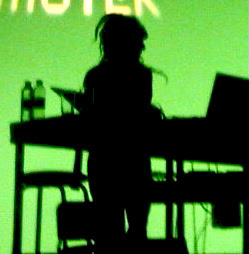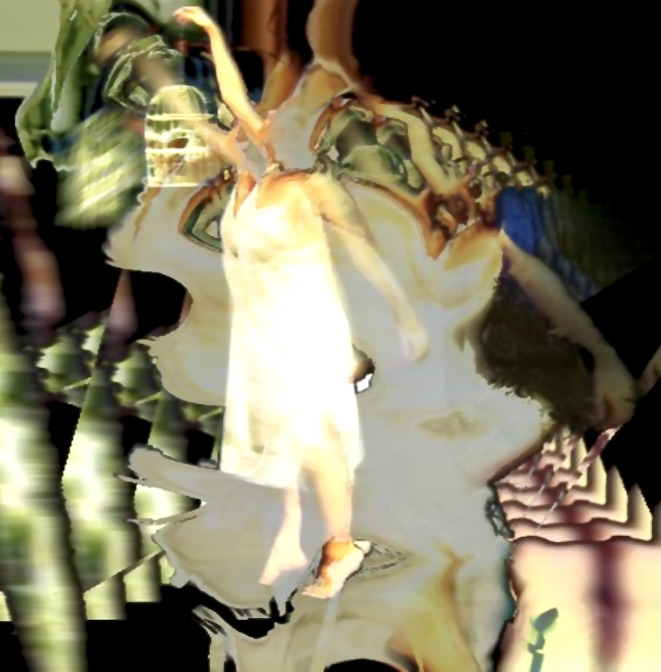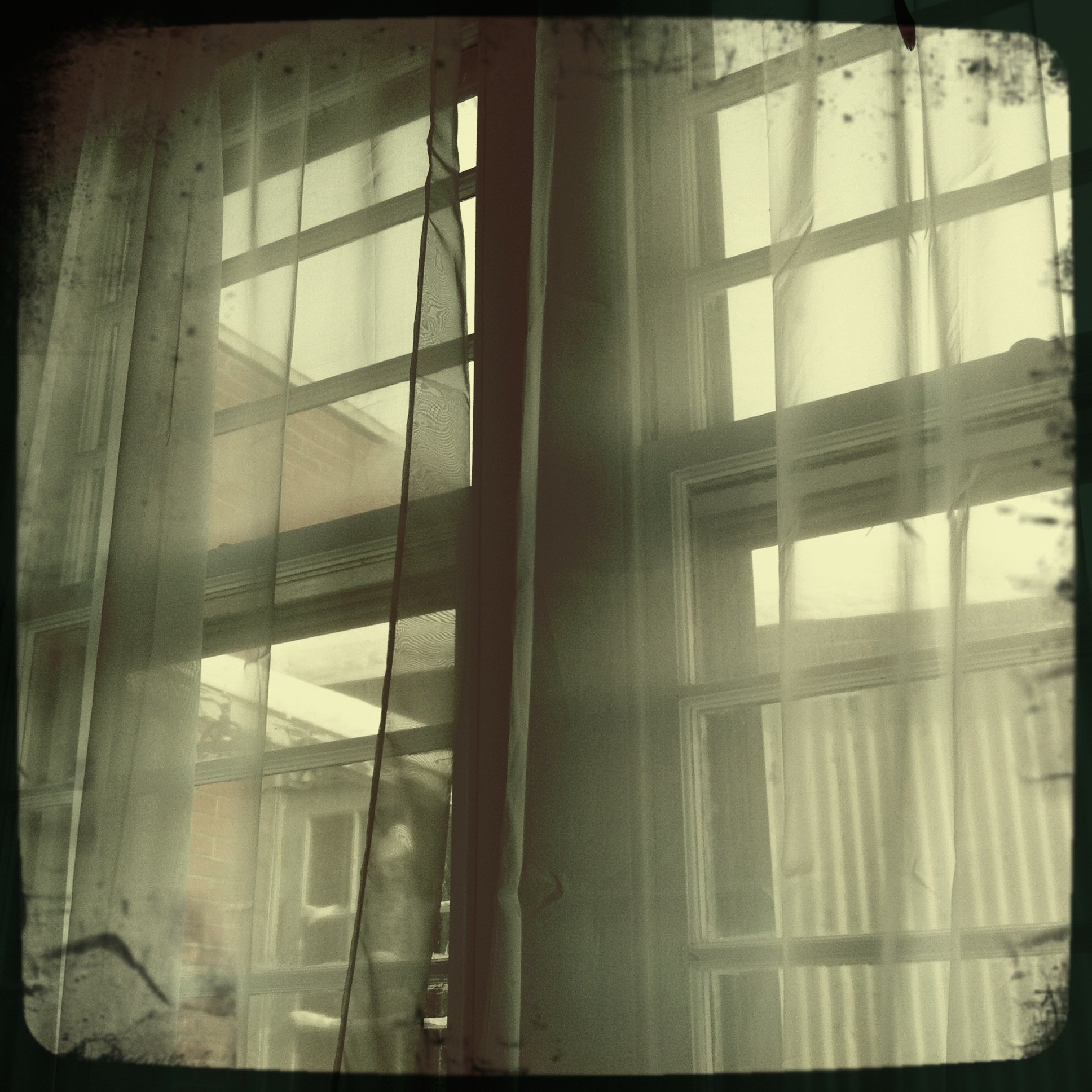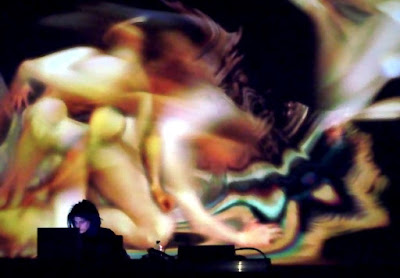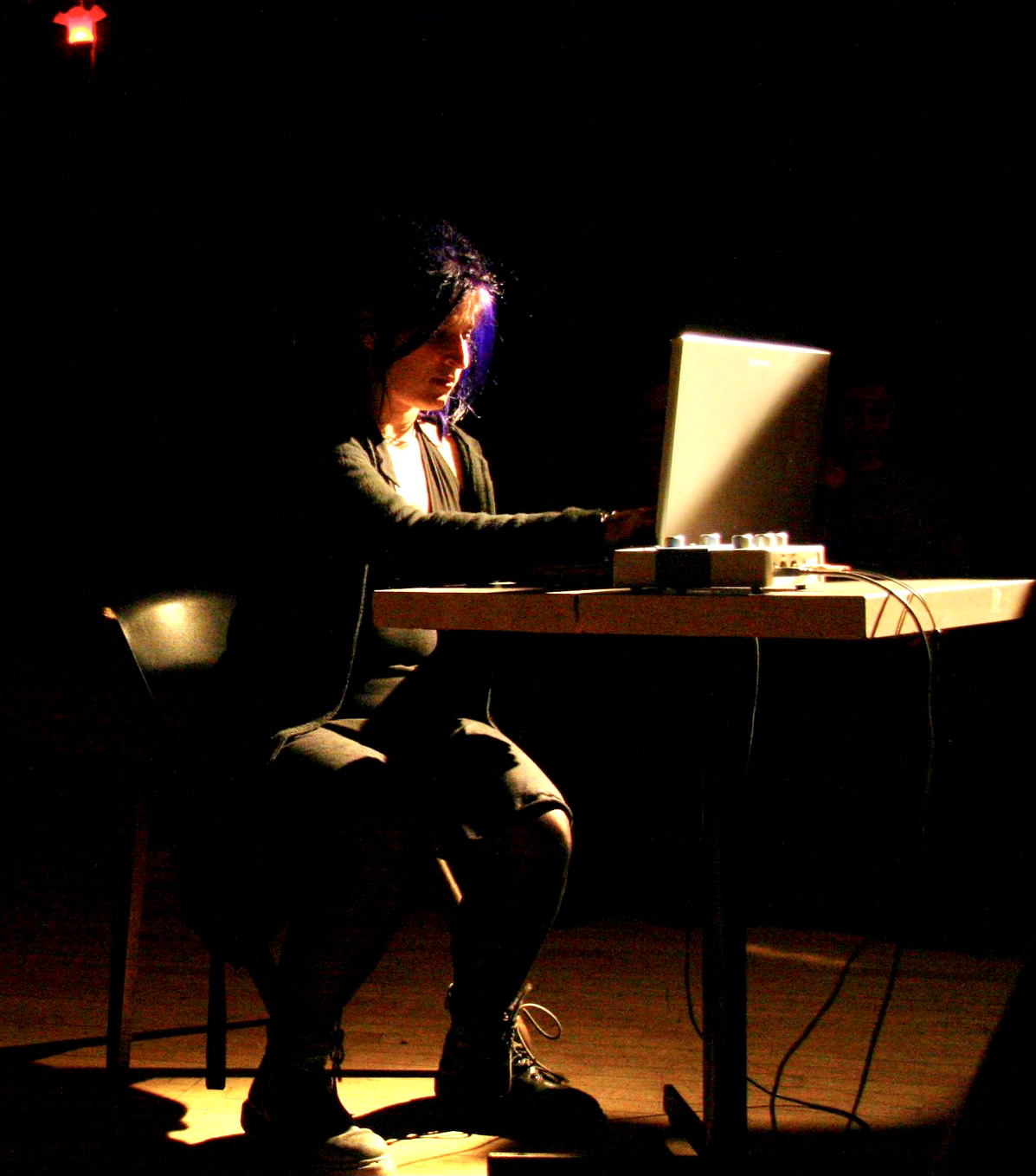Freida Abtan: subtle movements
 Navel-Gazers #28 is an interview with Freida Abtan who is going to talk to us about subtle movements. Dr Abtan is not only a recording artist, she's a verifiable multimedia renaissance woman - her page at Goldsmiths, where she lectured for much of the 2010s, listed dozens of audiovisual exhibitions and installations, soundtracks for art pieces and short films, and solo and group performances from the past 20 years. 'subtle movements', to me is something like an audiovisual work - if you shut the lights and listen through your best headphones perhaps you'll see what I mean... are those visions? Hallucinations? The machinations of this album are certainly subtle but the effect is powerful. What's going on here? How does this work? Let's ask Freida!
Navel-Gazers #28 is an interview with Freida Abtan who is going to talk to us about subtle movements. Dr Abtan is not only a recording artist, she's a verifiable multimedia renaissance woman - her page at Goldsmiths, where she lectured for much of the 2010s, listed dozens of audiovisual exhibitions and installations, soundtracks for art pieces and short films, and solo and group performances from the past 20 years. 'subtle movements', to me is something like an audiovisual work - if you shut the lights and listen through your best headphones perhaps you'll see what I mean... are those visions? Hallucinations? The machinations of this album are certainly subtle but the effect is powerful. What's going on here? How does this work? Let's ask Freida!AC: Firstly just to bring things down to earth as I got slightly hypnotised by the music while writing about it in the introduction... let's set the scene. I know you're Canadian. Was 'subtle movements' recorded in Canada, or here in London? And I'm curious whether you remember anything of interest about the time and place it was made?
Freida Abtan: 'subtle movements' was all recorded in Montreal, Canada. I had quit my job as a software developer to study art full-time and moved to Montreal because it seemed to be where a lot of the interesting electronic music in Canada was coming from. It turned out to be a fantastic move for me. Montreal is a really vibrant city. It's bilingual and hugely art-positive. My family and most of the people around me before then couldn't understand why I had quit my job and was going back to school to do something so unlikely to earn money, but in Montreal, rearranging your life to study art was a completely acceptable decision.
I love that you make audiovisual associations with that album. A lot of what I do is audiovisual and I have a lot of colour and kinetic associations with sound.
AC: So what was your motivation going into art school - just following your intuition or were you after theory or technique or what? How was this music affected by your studies (if at all) and/or the art world in Montreal?
Freida Abtan: When I went to art school, I had already done a double major in math and computer science. I wasn't really into computers before I started my math degree but I had to take a couple of programming classes as part of it. I was already an electronic music nerd and I just immediately started getting sound ideas through programming. I know that sounds a bit weird. The first music I wrote was actually in Visual Basic, and it was terrible!
I'd already been making a lot of art by myself and in my private community, a lot of visual art, and I knew that I wanted to study. I was interested in having the opportunity to make art in a larger context, a context that wasn't just me and my friends but that involved quite a lot of people all working on it.... so when I looked at going into art school I considered a few different options and one of the things that I was really excited about was this idea that I could use my programming skills in my art practice. There weren't very many places you could do that at that time. One was in London at Goldsmiths where I ended up teaching later.
AC: For me that's still the only place that springs to mind!
Freida Abtan: Well, there was this new initiative in Canada called Hexagram which was a really large multi-body grant between art and science that landed at a bunch of schools in Montreal. So I got very excited and I started to look at the offerings in Concordia, because they were one of the big English-speaking recipients of this grant. They have a program that at the time was called "Digital Image and Sounds in the Fine Arts" (now "Computational Arts"), that was half computer science and half fine art. I applied, and when I went down to check it out, MUTEK was on. I fell in love with Montreal right away. I'd found a program that was focused on this intersection of art and technology that was really, really important to me, and there was this tremendous electronic music culture... I just knew it was the right thing. I already had a computer science background so I didn't need to take the programming classes in that degree. When I was doing my undergrad previously and getting into stranger and stranger electronic music, I realised there was a field called electroacoustic music, but at that time you needed 8 years of music theory to study it, and I had zero! But, because I was in the computational art program, they let me take a first electroacoustics class and I did well enough that they just let me take more. I did a minor in electroacoustic music, and based on my work, got into a formal music program for my Master's. So I sort of back-doored my way into studying music.
My own electronic music is heavily influenced by studying electroacoustic music, there's no point in denying it. Some of the pieces that made it onto that album - not all of them - came from my studies, but I was already making music by myself in a context that was more influenced by first-wave industrial. Just me and my friends in Waterloo, me and occasional friends in Montreal, or just me privately. So, in terms of aesthetics, those were the two I learned from the most.
AC: You mentioned that it was uncommon at the time for there to be an intersection between computer science and art in academia. Has that changed nowadays, and what was your experience of that later in London?
Freida Abtan: Well, in London I was running a program that was half computer science and half music. I waived the requirement that you had to know music theory to get in because from my own experience, there's a lot of different approaches you can take to electronic music. I think that bar to entry isn't necessary and at Goldsmiths I had the power to abolish it.
London was a very exciting place to teach, because there was a real feeling that my students could get somewhere. I love Canada - it's a wonderful place to live - but it doesn't have the same international connections, and I think as an artist you reach the ceiling pretty quickly in terms of what you feel like you can accomplish. It's always a good idea to move around and just see what the rest of the world is like.
AC: One thing I always find interesting about recording is that for most artists it's an extension of being a musician, but you do get other people who cross over, sometimes into recording only, from other disciplines... so as a multimedia artist, where do you place 'subtle movements' on that continuum?
Freida Abtan: Well I was also making a lot of visual art. Because I had already studied programming, I could take more visual art classes. I got into painting at that point, and then slowly video, and got more time to spend making music. I even started to do a bit of music theory because I had access to those classes.
If I look at that album, I see easy associations with my visual art from then. When I look back on each period of my work, my visual art and music are all blended together. There's a certain wave of imagery. My first love was poetry, when I was a teenager, and I have a continued relationship with it. Poetic metaphors will come to my head and start to spill out into whatever I'm working on. Music, images, anything.
AC: Right so what you're saying is all your music/images/poetry from a certain time, say 2007, might have similarities which distinguish it from the work you were doing in say, 2015.
Freida Abtan: Undoubtedly. So lightness and weight for example, was heavily influenced by Éliane Radigue's work. She's an incredibly beautiful composer, and a buddhist practitioner. I'd also studied Buddhism when I was younger, and immediately recognized the sensate, affective qualities of meditation in her work. My own work's a lot "busier", but it was still a reaction to hers. The title came from a mental image I inherited from Milan Kundera, but the sounds (and their file names) are all related to the visual work I was doing at the time. I was starting to play with video, and working on a piece called "copper", about glares and light reflections, and feminine beauty. There was something in my head about light rising off the surface of desired objects and settling back down.
AC: There's a certain ambiguity to the sounds. The rubbery ambience of 'lightness and weight', the deep scraping sound at the start of manifold.. I genuinely can't tell whether some of these sounds are electronic or organic. What am I hearing? It makes me wonder, as the artist are you cognisant of that ambiguity too? As obviously you know how you made the sounds!
Freida Abtan: When I started making music, I got a copy of Sound Edit 16, (some really early sound editing software). I couldn't play instruments even though all the people around me could, so my music experiments were made from only samples of my voice or random objects I could record around my room, which I would then process and try to turn into interesting sounds.
So in a sense I was working with musique concréte techniques before I knew what musique concréte was. It came out of not being able to do what the people around me were doing - playing instruments - but also my interest in sound was sort of different from theirs. I'd listen to electronic music and I'd try to describe things I was experiencing and it would all be very visual, very metaphorical. I didn't understand what, say, a delay process was, so I'd think of it like dripping water. I found that when I started to manipulate sounds, there was a plasticity there. You could give a sound any kind of quality if you just played with it long enough and really dug into the structure.
The Montreal electroacoustic community is very heavily influenced by acousmatic music, specifically in the French and British traditions, which is what musique concréte developed into. You can trace a lineage there - it's really focused around acousmatic listening which is a way of listening to sound where you separate the source origin from its qualities, and work with those qualities. I was already doing that in my music, so tumbling into electroacoustic studies was very lucky - it sort of legitimised my own approach to sound-making, with the one caveat that high academy music doesn't really enjoy repetition or beats. That's great when you're studying because it pushes you to do other things, but the actual world of art is very very wide. There's no rules on how you make great art. Not really... or on how you make terrible art, as it turns out.
AC: None whatsoever!
Yeah, I'm convinced there's some sort of advantage in approaching sound from a non-musical background. With musicians, there's some sort of blind spot.
Freida Abtan: Yes. On the other hand, the people who do have the formal background have a whole other language they can deal with when making experimental music. There's this infinite territory in the middle. It really depends on what you want to do. Sometimes you want to present something because it's new... sometimes that's not the point... so let's just say that art's very wide. There are so many ways to access it. I wouldn't say they're all equal - I do what I value the most like everyone does - but I personally am interested in a perceptual approach to art-making, where it's not so much about what your skills are but about what you're able to perceive through developing your senses. So from that perspective, someone who just loves music has actually been studying it their whole life.
Freida Abtan: Exactly. But that's what I love about electronic music in particular. The tools are really accessible for someone who has very developed sense perception but who might not have the rigorous physical skills that are required to make those sounds with an instrument.
AC: 'subtle movements' has some of the most pronounced stereo sound I've ever heard on a recording. I need to insist again that our readers listen to this through headphones! Do you recall this being a particular focus when creating? You clearly have a very spatial sensibility with sound - do you ever become frustrated with the limitations of stereo sound, and turn to installations and performance for that reason?
Freida Abtan: Yes! When I was studying electroacoustic music, I got really into large speaker arrays and spatial diffusion systems. My formal study encouraged me to to use the spatial field widely when I was writing two-channel music, and I've also written a lot of multi-channel work.
Mixing is this magical process in electronic music where you start to carve space for the sounds you want to hear. I think that with more traditional instrumentation, mixing is sometimes a separate process from the actual composition of the music, but in electronic music they blend in this intense way. For me, the spatial field is part of how I do that carving. We all perceive sound differently. I often thing of this organic movement where many things become one and one thing becomes many, and that happens in how things are animated over time, how they diverge, how they converge. Space is one of the dimensions in which you can animate sounds apart from each other.
So on 'subtle movements' I'm mostly dealing with space in terms of stereo. At the time I didn't understand how to work with a sense of representational depth, other than mixing with volume. Now I have a bit of a different understanding of things like short, psychoacoustic delays and reverb to move things closer or further away. I was learning. My sense of space has changed a lot.
AC: That's really interesting, because I was listening to this the other night and I thought you actually had achieved a sense of almost quadrophonic space, in a way which is theoretically... impossible?
Freida Abtan: Part of what I did was on purpose and part was just bumbling through. I'd be completely remiss here if I didn't specifically single out that the mastering engineer for that record was Dominique Bassal, who's an incredible electronic composer in his own right, and has the sharpest ears I've ever known. He was great, because I'd talk about what I needed the sound to do, and he'd tell me if it was actually doing it. Everyone needs someone who looks at your art and says: you're a fool, it's not actually doing what you think it is.
He's a professional mastering engineer with a specific interest in electroacoustic music, who tries to make himself accessible to people doing things he likes. I was very lucky that he worked with me on that album.
AC: I discovered after some research that cackles of my heart and electric smudge are actually collaborations with Steven Stapleton and Colin Potter (Nurse With Wound). Cool! How do you know those guys and what was the nature of these collaborations?
Freida Abtan: That was a strange meeting. I was a huge fan of Nurse With Wound, Coil and Current 93 in my early 20s especially, and they're all bands I've still incredible amounts of respect for. I was lucky enough to meet them all.
While I was still a student, in my math degree, I'd spend all the money I had, on albums, all of the time, haunting all the record stores, if you know what I mean?
AC: Not at all! Haha.
Freida Abtan: I was ordering all this stuff from Britain into my local record store... you know how it is, you'd find the record store that actually was "your" record store, which in Kitchener was Encore Records. At some point the guy who ran the shop said: ok, I understand that this music is important - walk me through it - tell me what I have to hear. So I told him about these bands and what was important to me about them. He was specifically interested in Current 93 so I gave him sort of a guide through the catalog and what I thought he should listen to.
Years later, lo and behold, Current 93 were going to play in Toronto, which was unbelievable because all of this stuff was like magic stemming from this distant world in the UK, and I was in Canada where those bands never reached. I showed up at the concert, I was so excited. The record shop owner - Mark Logan - was the one putting on the concert. I hadn't seen him in years. So he says: Freida! I have a surprise for you. He dragged me backstage, pushed me at David Tibet and said: this is the girl I was telling you about, she's the reason we all know your music.
Steven Stapleton was there, whose music, I guess, meant the world to me. Both bands meant a lot to me but in terms of what I was doing there was a kind of similarity with the sound processing that Steven Stapleton is famous for. So like everyone else in the world, I told him that his music had changed my life and that I'd quit my job and went to art school and so on... Since I knew Mark, I got invited to have dinner with the performers after the concert. Steven was talking about this performance he'd done with contact microphones, and I started talking to him about microphone construction which I suppose I knew a lot about. How to build contact microphones, how to ensure they have a good response in the high frequencies, how to isolate them, ground them properly.. and he just gave me a look and said: I think I'd like to hear your music.
AC: Nice. So how'd you collaborate? He must have just been in town briefly.
Freida Abtan: He invited me to come to the UK to record.
AC: Ah, so those two pieces were made in the UK.
Freida Abtan: Right, they were made at Colin Potter's studio. We actually did a show together in Preston, up north in England. It was the first time I was in the country. The show was beautiful but unfortunately the file from the recording didn't work out. We spent a few days in the studio and those two tracks came out of it. I put them on 'subtle movements', which Steven released for me and I think they also show up on some Nurse With Wound compilations.
I played with Nurse With Wound quite a bit after that. Steven referred to me as a floating member. I also did a visual show for them. I was really interested in experimenting with situated performance and projected cinematography. The first big show that we did together was at the Great American Music Hall, and I worked to make set projection areas with different visuals. They toured with the video afterwards.
AC: Those two tracks are great. Actually they're both sort of.. funny.
Freida Abtan: Yes. I always found Steven's music very humorous. And there is also a sense of... deep funk. He seemed happy that I saw it that way as most people act as though it's terrifying. I find his music just deeply happy-making and so beautiful. It's his personality coming out in the things he does, and he's so playful. He described our process as "the unstoppable force meets the immovable object". We did not always agree. Diana Rogerson told me I was the only person to ever fight with him in the studio.
AC: That guy is a legend. Sounds like he met his match!
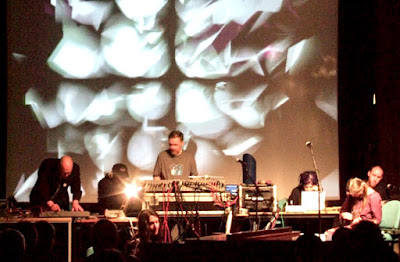 |
["Scribble Seven": Andrew Liles, Steven Stapleton, Maja Elliott, Colin Potter, Freida Abtan, Joolie Wood, Matt Waldron, 2006] |
Ok so there's a cryptic message on the Bandcamp page for 'subtle movements' saying this album is dedicated to "the cabin and the people who were there". Out of curiosity what was the cabin? And who, if I may ask, were the people who were there?
Freida Abtan: Oh, well... So remember I wasn't a trained musician, I was just somebody who loved music, and I had this tight group of friends in Kitchener/Waterloo when I was doing my math degree, who were all artists. I wasn't at the point where I could think of myself that way yet. Art was something I loved, and I'd think: imagine being able to make it yourself.
This group of friends was very special to me, and probably brought me out of my shell and allowed me to value the things I was doing.
Somebody found this album at a garage sale called Voodoo Drums in Hi Fi, an old Atlantic Records album made in the 50s. Some Americans went to Haiti and took recording of rituals. I can't tell you how deeply we fell in love with that album.
One of my friends, his family had this cabin about an hour and a half drive away, and we started driving to that cabin to make music, bringing drums and ritual objects. At the time I did quite a lot of chanting but then got slowly into drumming. We'd make music for 8 hours at a time, and do these incredible rituals there, which became a pretty formative experience in my life. I'd say that's how my music started, really.
AC: Yeah, I think a lot of musicians have experiences like this.
AC: Yes! You can count on it.
Freida Abtan: We tried to build a house to live there permanently... but cooperative projects with young artists don't always work out.
These are all still people that I treasure. I don't see all of them anymore but I still treasure them.
AC: One other thing I'm finding in your liner notes, apparently the long track shimmer and dissolve was produced for "TILT" (what's that?) as a tribute to the work of the Canadian composer Hugh Le Caine - himself an odd case of a nuclear physicist who became a recording artist. I can imagine why this interests you! Tell me about this piece.
Freida Abtan: Hugh Le Caine wrote a piece called Dripsody that I suggest everybody check out... he also invented musical instruments, he was an early electroacoustic composer in Canada. Electronic music has always blended people from more classical music backgrounds and people from math and science, because of its embracing new technologies. I find him a very fascinating historical figure.
TILT was an event that was put on by a promoter named Eric Mattson, who I should have mentioned by name. He featured me in a lot of his Montreal events while I lived there. I got a lot of wonderful opportunities because of him. He was the kind of guy who would be slam-dancing to musique actuelle at experimental music events though he was much older than the kids in the crowd ....really just a wonderful figure in Canada who's done so much to promote experimental music, and somebody I really respect.
TILT was part of a concert series in which he paired artists with historical figures to be inspired by. Eric asked me to write music that was inspired by Hugh Le Caine. "Dripsody" uses these wonderful textures all made from a sample of dripping water... slowed-down, sped-up, layered, it's just very playful and beautiful and expansive. So I similarly took the sound of one bell and turned it into this quite large soundscape. That piece of music is very special, I still appreciate it.
AC: Is the whole piece based around the bell then?
Freida Abtan: No, the first part of it is. There are three parts to that piece. It's kind of a personal narrative.
Music can be like a diary. When I listen back to pieces I made I'm hearing a part of my life. I wrote the third part of 'shimmer and dissolve' to play at a show for my birthday, organised by another wonderful promoter in Montreal - Constantine Katsiris who's a beautiful artist in his own right (Scant Intone). We were quite close at that time. The piece came out of some of the emotional situations in my life then.
A lot of that music... especially the bridge in the middle of 'shimmer and dissolve', is indicative of the studio at the Universite de Montreal where I was studying. Though it wasn't all initially written there, the music came alive and changed quite a bit in that studio. So it's got associations for me with different events but also holds the experience of the kind of listening that studio inspired.
AC: Is that true of the whole album?
Freida Abtan: Only 'shimmer and dissolve'.
AC: So where did you work on the rest?
Freida Abtan: Some of it was in the studios at Concordia University, some of it was my house. Being a student meant having access to good studios where I could go and listen. I'd be working on my computer at home... but the sounds would only come alive in this subtle mixing process where I would really need to be able to hear what I was doing. I didn't have that at home. Part of why that album sounds the way it does is because I was in university and I had access to their facilities.
AC: What about nowadays? Do you have everything you need just working at home?
Freida Abtan: Working on it! I need help mastering because my home studio's not perfect. But now I'm at the point where I'm better at building studios at home.
Also, I do teach - I was teaching music computing and audiovisual composition at Goldsmiths - they have nice studios though I tended to leave them for the students, so I was mostly working in my home studio. In my new position I'll have a teaching studio so I'll probably be able to audition there more. When you're young faculty it's very hard to prioritize time for your own projects. It's unbelievable how demanding your work life is. In a sense, it's part of what I want from my life. I feel good about what I'm doing for my students, but I'm now at a point where I'm starting to get quite serious about my own practice again... You have to strike a balance in terms of your time resources, in terms of the actual spaces and equipment around, all those things.
AC: You mentioned to me last year that you were working on some material for a new album. Would that be a return to recording for you? Seems you have also relocated from London to Pittsburgh, so how's that going? I like Pittsburgh!
Anything else in the works for you our readers should be aware of?
Freida Abtan: Yes!
There was a long period where I wasn't writing much new music. I created a real-time video system for remixing my video work live and was starting to play around doing performances with that. Then a few years ago I started writing new music again in a more serious way. I got to around E.P. length and then for whatever reason got busy with work and the project languished. I'm still hoping to write more of that music and I think that if you hear it, you'll see it's very much influenced by my time in London. It's definitely got beats in it, it's really different but it still sounds like me. When you get really deep into your practice, even if you haven't been in it for a long time, evenything sounds like you, there's no escaping it.
The year afterwards I started doing a completely different project with an incredible cellist named Seth Parker Woods. I completed a commission for the Seattle Symphony when he was their artist in residence. They built a surround-audiovisual space... and I'm really interested in immersive composition. His performance is integrated with the surrounding audiovisual media. I'm hoping to turn it into an hour-long production and maybe an album.
I quite like cello. I've learned enough notation to start writing scores. Not the best scores, but scores!
AC: That sounds amazing!
So actually I have another question if you don't mind. You mentioned you were writing new music, the stuff which got to E.P. length. For you am I right in thinking this is synonymous with recording the music? There's no distinction between composing and recording this kind of music is there?
Freida Abtan: Yeah it all happens together. It means that I've been working on new pieces of electronic music. They're not mastered yet, and I'll have to see how much accumulates in that style, before I can talk about turning it into an album.. but what does it mean to release electronic music now if you're an experimental artist? Labels still exist, sort of... but there aren't that many and they aren't doing well. There wasn't that much money for them to begin with and now it's very hard for them to operate. Releasing music feels a bit like putting something into the void. So it's not that I haven't made any music over the past several years, it's that I haven't tried to share it.
AC: This has all changed from just 10, 15 years ago.
Freida Abtan: I did a couple of tours, and those were great - there's definitely still a place for live experimental music, but would I press another CD up? I still have lots of copies of the hands of the dancer.
I still do play shows but I am a professor now so a lot of my concert opportunities are in a very different context. I'm still interested in making more music that relates to that other stage of my art practice. I still love that music but I don't really know where its home is.
AC: Yeah so this is really why I started this series originally. Because it seems that nowadays people put out recordings and they just go into a vortex. And yet some of that work is really remarkable! Or I think so.
Freida Abtan: I appreciate what you're doing. A large portion of my life is devoted to helping other people make art and specifically engage with electronic music on a deep level. I love that everybody now feels empowered to make music themselves. I want people to be able to create - it's a different relationship with sound, and sound is magic.
I still have people writing to me about 'subtle movements' sometimes, so it's obviously not entirely slipped into the void, but it was experimental music and so only a small community of people took an interest in it to begin with. I'm touched that it's something they still feel strongly about.
AC: So am I - it's one of my very favourite albums. Thanks so much for talking to me.
Freida can be found at her website, https://www.freidaabtan.com/.
Image credits
1) Freida Abtan (2007)
2) unknown photographer (MUTEK, 2010)
3) Freida Abtan (screen grab from a live performance featuring real-time video manipulation)
4) Freida Abtan (2007)
5) Caroline Hayeur (MUTEK, 2008)
6) unknown photographer (still from Fear Of Flight, 2012)
7) Simon Law
8) Darius Akashic (concert at Lancaster University, 2006)
9) Freida Abtan (2007)
10) Freida Abtan (screen grab from a live performance featuring real-time video manipulation)
11) Freida Abtan (2007)
12) Venus Soberanes (2005)

